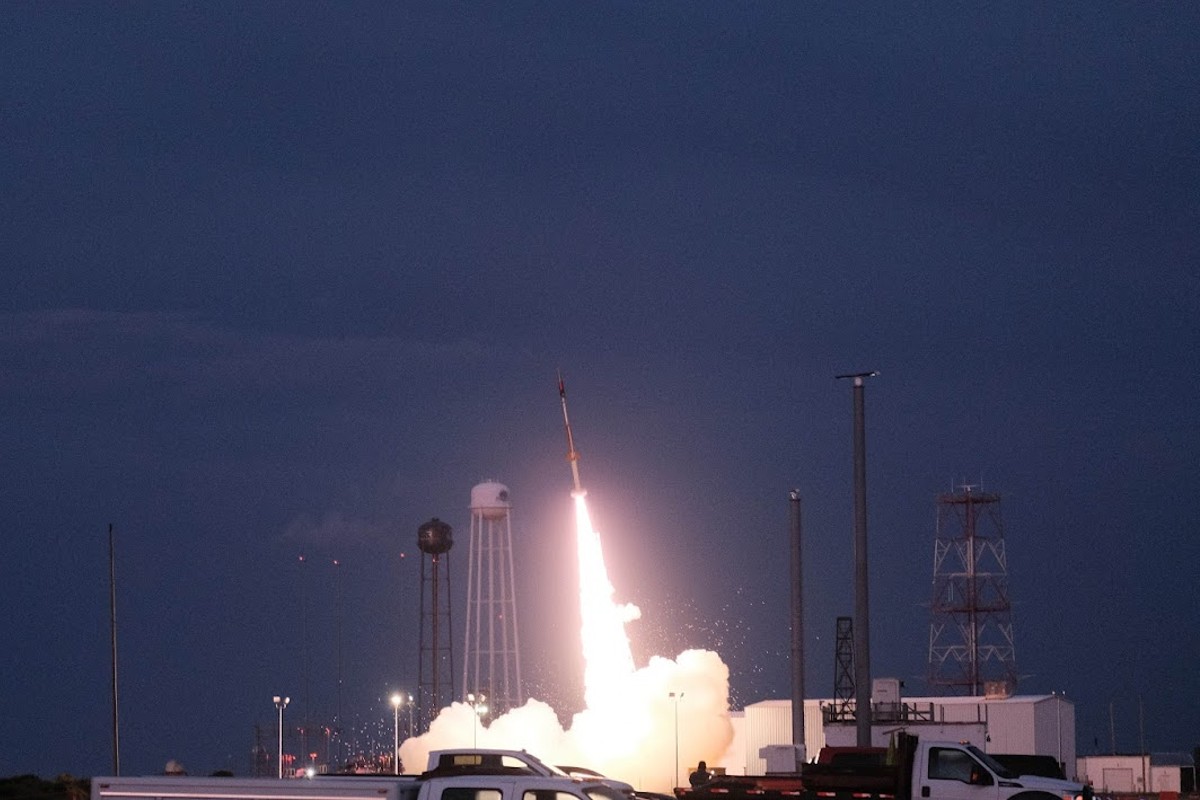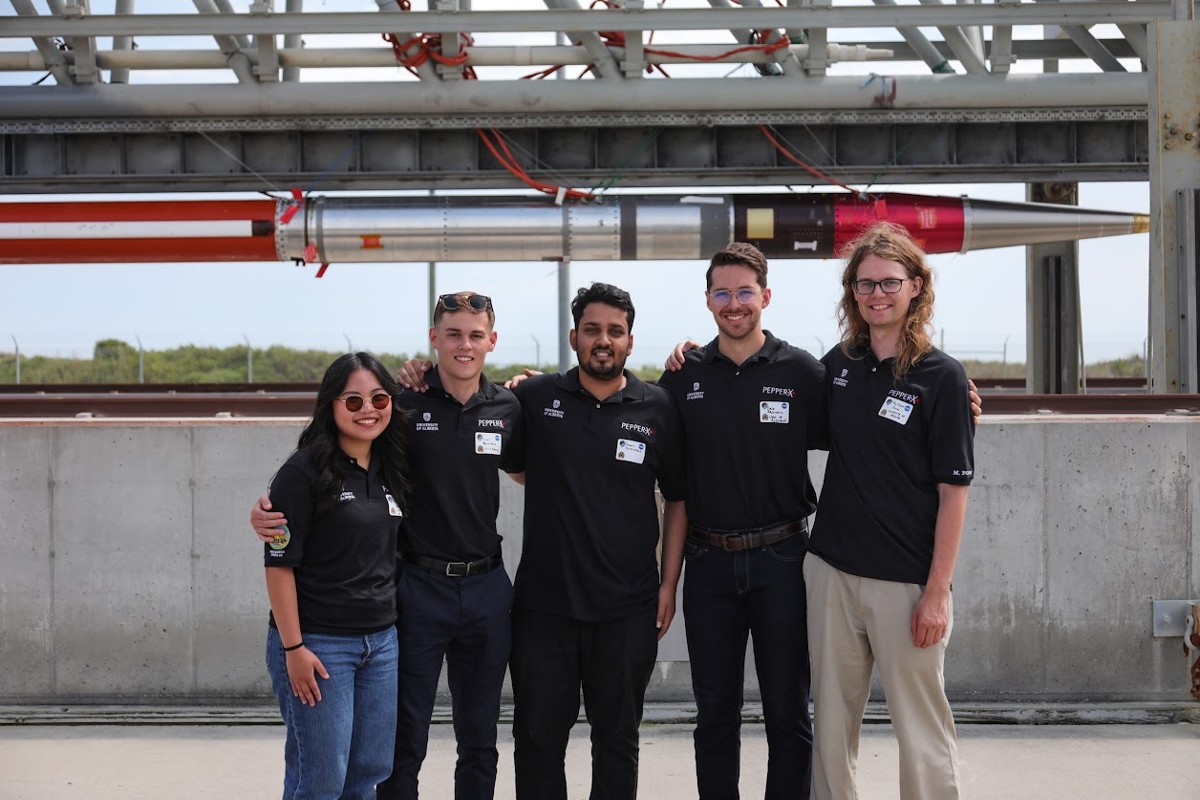Students launch experiment into space on NASA rocket
Jordan Cook - 27 September 2024
In August, a team of students across the faculties of Science and Engineering successfully launched an experiment into space on-board a rocket launched from NASA's Wallops Flight Facility in Virginia.
The PEPPER-X project is a student-built experiment designed to study the interaction between space radiation and the Earth. The team, led by Ian Mann a physicist in the Faculty of Science, was made up of both undergraduate and graduate students who worked for over 16 months getting the project ready to launch as part of the NASA RockSat-X student research experience.
PEPPER-X stands for Payload for Energetic Particle Precipitation Education and Research - eXperiment.
“This experiment was built by a student team, and the purpose of the experiment is to look at how energetic particles in space interact with the Earth, and to investigate the impact this interaction can have on climate,” explained project manager and systems engineering lead Erik Halliwell, a graduate student in the Faculty of Engineering.
The project involved a competitive selection process with NASA, where the team outperformed a number of prestigious universities, and it was truly student-led.
“This experiment was almost entirely built, manufactured, and tested by students. Of course there was faculty oversight — they're there if we need them — but they're busy, so it was mostly ‘go figure it out,’ and I liked that.”
The learning this approach enabled for the students was incredible, said Halliwell. “It's been a tremendous growth experience for all of us.”
For Halliwell, being project manager on PEPPER-X provided important leadership opportunities.
“It's been really nice to work with people with different levels of experience, and then get the opportunity to pay it forward. I have people who mentor me in my academic and professional journey, and I was able to be that person for somebody else - to be the mentor that I would have wanted. That's huge. I'm really grateful for that opportunity.”
He stressed the incredible teamwork and the interdisciplinarity that contributed to the success of the project, and his appreciation of support from University of Alberta space experts as well as from NASA.
“It was a huge team effort,” Halliwell said. “People across Engineering, across Science, the administrative support from our lab, not to mention at NASA, all have been a huge part of enabling the success of this project.”
The team was the first ever non-American team to participate in the NASA RockSat-X program and have their experiment launched into space as part of it. Joyce Winterton, Senior Advisor for Education and Leadership Development at the NASA Wallops Flight Facility spoke of what a pleasure it was having the team from Alberta participate in RockSat-X.
“The PEPPER-X project team demonstrated their professionalism and dedication throughout the process. The members of this team will be a great addition to the aerospace workforce,” Winterton said.
Looking ahead, the team is currently working through analyzing the data, which will take weeks to months to fully process. They will then take the lessons learned and apply them as they develop similar instruments for a satellite mission launching in 2027. That project is the RADiation Impacts on Climate and Atmospheric Loss Satellite (RADICALS) mission, led by Mann.
With a project like PEPPER-X, there are engineering objectives and there are science objectives.
“...the overarching mission of this project is to build instruments that can survive in the harshness of space, and make measurements of the processes that the physicists need so they can do their jobs. But the purpose of training the students is for them to develop the skills needed to join the Canadian workforce in aerospace by making instruments that work,” Halliwell said.
“So we need to build the instruments, and we also need to train students. And we did both.”

